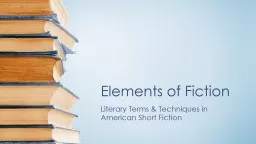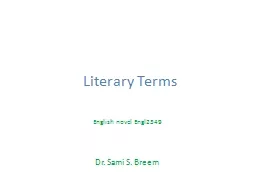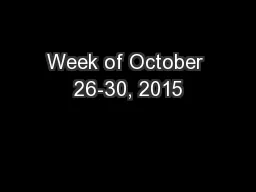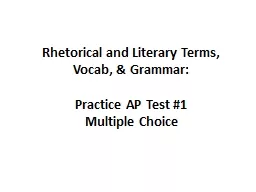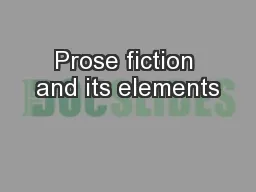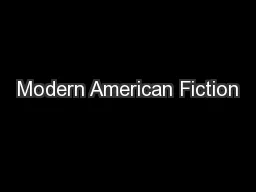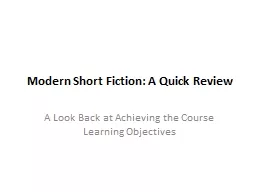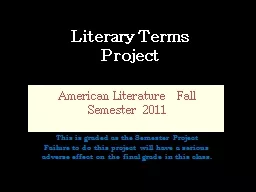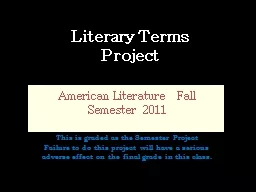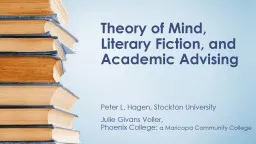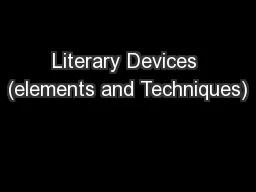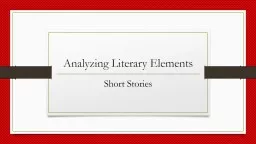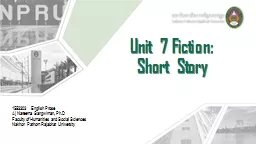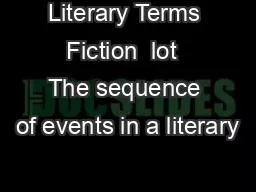PPT-Elements of Fiction Literary Terms & Techniques in American Short Fiction
Author : myesha-ticknor | Published Date : 2018-10-28
PRETEST Elements of Fiction CHOOSE THE CORRECT LITERARY TERM FROM THE CHOICES PROVIDED 1 Which of the following is an element of plot A Symbolism B Setting C Conflict
Presentation Embed Code
Download Presentation
Download Presentation The PPT/PDF document "Elements of Fiction Literary Terms &..." is the property of its rightful owner. Permission is granted to download and print the materials on this website for personal, non-commercial use only, and to display it on your personal computer provided you do not modify the materials and that you retain all copyright notices contained in the materials. By downloading content from our website, you accept the terms of this agreement.
Elements of Fiction Literary Terms & Techniques in American Short Fiction: Transcript
Download Rules Of Document
"Elements of Fiction Literary Terms & Techniques in American Short Fiction"The content belongs to its owner. You may download and print it for personal use, without modification, and keep all copyright notices. By downloading, you agree to these terms.
Related Documents

